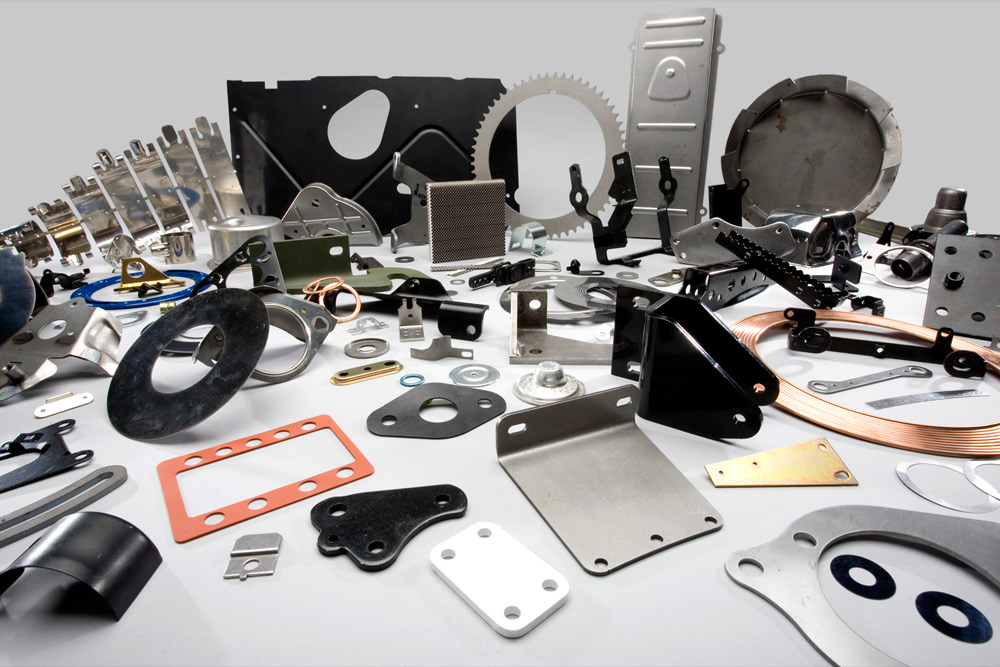Just How Metal Stamping Transforms Manufacturing Performance
Just How Metal Stamping Transforms Manufacturing Performance
Blog Article
Steel Stamping Advancements: Elevating Manufacturing Processes for Superior Outcomes
In the world of producing processes, metal stamping has actually long been a foundation method for creating a variety of precision components. With the ruthless march of technical advancement, the landscape of steel marking is going through a considerable makeover.
Development of Steel Stamping Strategies

Additionally, improvements in product scientific research have resulted in the growth of high-strength alloys that can currently be effortlessly stamped into intricate forms, dealing with a more comprehensive variety of industrial applications. The integration of robotics and expert system has further enhanced the stamping procedure by boosting speed and accuracy while decreasing the danger of human mistake.

Effect of Advanced Materials
Have advanced products changed metal marking processes considerably in the production market? By making use of materials such as high-strength alloys, progressed composites, and cutting-edge finishes, metal stamping procedures can now create components that are lighter, more powerful, and much more sturdy than ever before.
These sophisticated products provide remarkable mechanical buildings, deterioration resistance, and thermal stability, allowing producers to satisfy the needs of modern sectors such as aerospace, vehicle, and electronic devices. Furthermore, making use of advanced materials in metal marking has assisted in the manufacturing of intricate geometries and intricate layouts that were formerly unattainable via traditional methods.
Additionally, the implementation of sophisticated products has brought about reduced material waste, lower production prices, and shorter preparations, making steel marking procedures a lot more cost-effective and lasting. As innovation proceeds to development, the effect of advanced materials on metal stamping procedures is anticipated to drive additional advancement and boost the competition of suppliers in the global market.
Automation in Metal Stamping
The evolution of metal marking procedures driven by the combination of advanced products has actually set the phase for significant improvements in automation within the manufacturing sector. Automation in steel marking has changed manufacturing processes, enhancing performance, precision, and overall result high quality. With the application of robotics, sensing units, and computer-controlled systems, tasks that were time-consuming and once hands-on can now be implemented with unmatched speed and precision.
Automation in metal marking not just speeds up production prices but also guarantees consistency in the manufacturing process. By reducing human treatment, the danger of mistakes is considerably reduced, leading to higher levels of product uniformity and integrity. Additionally, automation makes it possible for suppliers to undertake complicated marking tasks that would certainly be unwise or difficult to attain manually.
In addition, automation in metal stamping adds to a safer working setting by decreasing the requirement for staff resource members to engage in unsafe or repetitive tasks - Metal Stamping. This change in the direction of automation not just enhances productivity but likewise leads the means for the future of production, where technology plays a central function in driving operational quality
Top Quality Control and Inspection Systems
With a concentrate on accuracy and integrity, quality assurance and evaluation systems play a crucial function in making certain item quality in metal marking procedures. These systems are made to check every phase of manufacturing, from product assessment to the end product, to guarantee that all components meet the required criteria. By applying innovative modern technologies such as optical examination systems, coordinate gauging makers (CMM), and automated determining equipment, manufacturers can discover even the smallest inconsistencies in measurements, surface area top quality, and total stability of stamped parts.

Sustainability Practices in Steel Stamping
Building upon the foundation of accuracy and integrity established through top quality control and inspection systems, the integration of lasting techniques in steel marking processes is progressively becoming a focal factor for manufacturers imp source looking for to minimize ecological impact and maximize source use. Sustainability methods in metal marking include a variety of efforts focused on minimizing waste generation, power usage, and greenhouse gas exhausts throughout the production process.
One key aspect of sustainability in metal stamping is the adoption of environmentally friendly materials and modern technologies that advertise recyclability and waste decrease. By utilizing recycled products and implementing energy-efficient equipment, manufacturers can decrease their carbon footprint and add to an extra sustainable production cycle. Furthermore, maximizing production processes to reduce material waste and power usage not only benefits the setting yet likewise results in set you back financial savings for companies over time.
Moreover, the implementation of sustainable techniques in steel stamping can boost brand name reputation and interest eco mindful consumers. As sustainability remains to acquire value in the manufacturing market, integrating environment-friendly campaigns right into metal marking processes is essential for long-term success and competitiveness in the marketplace.
Final Thought
Finally, metal stamping techniques have actually dramatically evolved over time, integrating innovative products and automation to enhance manufacturing procedures. Quality assurance and inspection systems play a vital role in making sure premium outcomes, while sustainability practices are significantly being applied to lower environmental influence. These technologies in metal stamping have actually changed the industry, bring about more sustainable and reliable manufacturing approaches for various markets.
Metal stamping, as soon as a manual and labor-intensive process, has changed into an extremely automated and sophisticated technique of forming steel sheets into various forms and styles.Have innovative materials changed steel stamping procedures considerably in the manufacturing market? By utilizing materials such as high-strength alloys, advanced compounds, and ingenious coverings, steel stamping processes can now produce parts that are lighter, more powerful, and a lot more sturdy than ever previously.
The advancement of metal marking procedures driven by the integration of advanced materials has actually set the phase for substantial advancements in automation within the production sector.In conclusion, steel marking techniques have actually significantly developed over time, you can check here integrating advanced materials and automation to improve manufacturing procedures.
Report this page